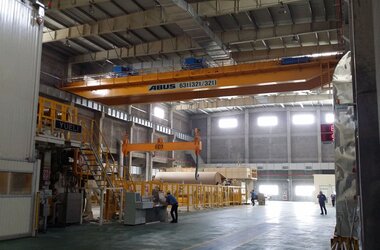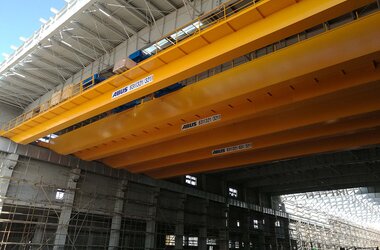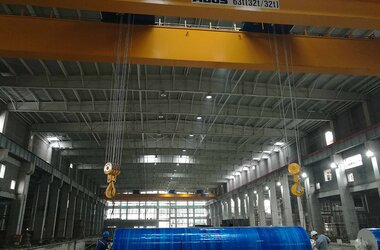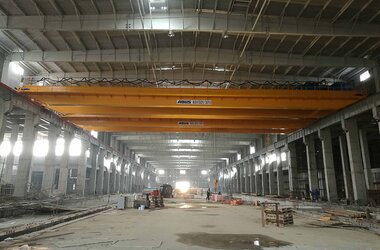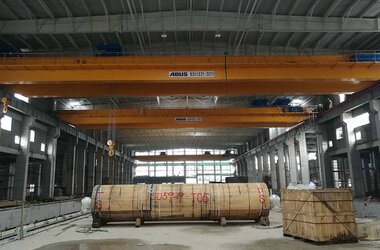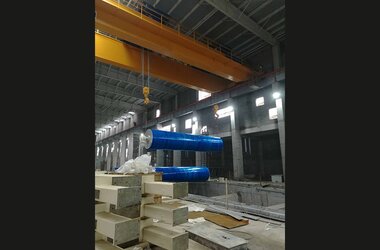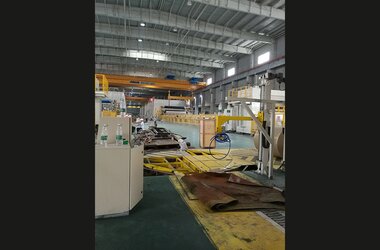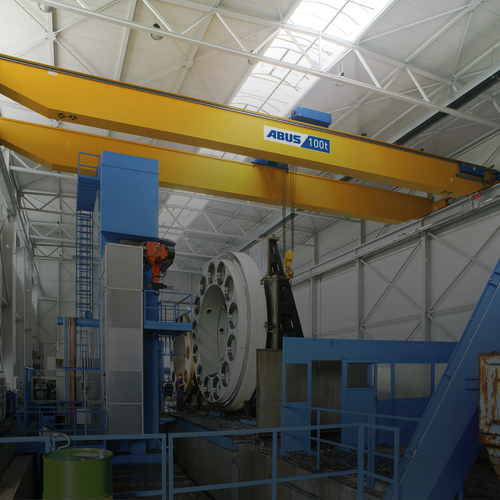Paper – ranging from valuable single sheets to mass products
It is not possible to determine with absolute certainty who first invented paper. The Chinese Tasi Lun first described the procedure for making paper in the year 105 AD. However, paper has been found in China that was dated to 200 BC making it considerably older than the records by Tsai Lun. The amount of paper that could be produced at first was quite limited due to the high efforts of manual work involved in the manufacturing processes. This made one single sheet of paper really precious. Machine-based production and thus the ability to produce large amounts only became available from the middle of the 19th century onwards. Further technological development made paper into a mass product used for the most diverse applications. Manual manufacturing processes resulted in single paper sheets being created whereas today the industrial production of paper results in continuous paper webs. Nowadays we cannot begin to imagine daily life without paper products—from simple notepads to elaborately designed packaging. One of the largest paper producers worldwide is the People’s Republic of China with an annual output of over 100 million tonnes.
Longchen Paper Group – a large paper producer relies on ABUS lifting technology
The Longchen Paper Group (www.longchenpaper.com) was founded in Taiwan in 1978 and now has several production sites in China and in Taiwan. The company produces corrugated cardboards, packaging material, customer specific packaging solutions, etc. Large companies in the food, IT, and electronics industries are among their customers. Large paper reels have to be moved among other things in the manufacturing processes of these paper products and the corresponding crane technology has to be able to lift and move loads of up to 63 tonnes in a safe way. The cooperation between the Longchen Paper Group and the Chinese daughter company of ABUS in Shanghai dates back to the year 1998 when the first ABUS crane was commissioned in Wuxi, a large city northwest of Shanghai and home to several million people. When Longchen Paper Group expanded further production sites were established in Wuxi, Pinghu, Hubei, and in Taiwan. Another large investment project was concluded with a production site in Hubei in 2016. ABUS lifting technology is used in this production site also.
Heavy weights – smoothly and safely moved with ABUS EOT cranes
A total of three EOT cranes were installed at this new production site. The huge paper reels are lifted by three ZLK double girder EOT cranes with spans of 37.2 metres and hook paths of 22.5 metres. Two of these overhead travelling cranes feature two electric wire rope hoists GM7000 each with load capacities of 32 tonnes each. The third EOT crane was fitted with a total of three hoists: in addition to two wire rope hoists with SWLs of 32 tonnes each a third hoist was installed with a load capacity of 63 tonnes.
When two wire rope hoists are used together in order to transport long and cumbersome goods such as paper reels then particularly even lifting has to be ensured at all times to guarantee safe load handling. Therefore both hoists have been equipped with integrated synchronisation controls GLS. When travelling together the lifting speeds and thus the relative positions of the hooks are constantly aligned (the control precision in rated operation is smaller than 25 mm).
Smooth acceleration and deceleration characteristics are also advantageous for crane travelling when sensitive goods are transported. The cranes have therefore been fitted with smooth starting units AZS and with smooth switching relays SU2 for long travelling. The smooth starting units make acceleration in the fast crane travelling mode really smooth whereas the smooth switching relays cause generative braking when transitioning from fast to slow travelling mode. The cooperation of both devices results in better crane travelling characteristics overall.
The crane has also been fitted with a walkway for maintenance and service purposes.

